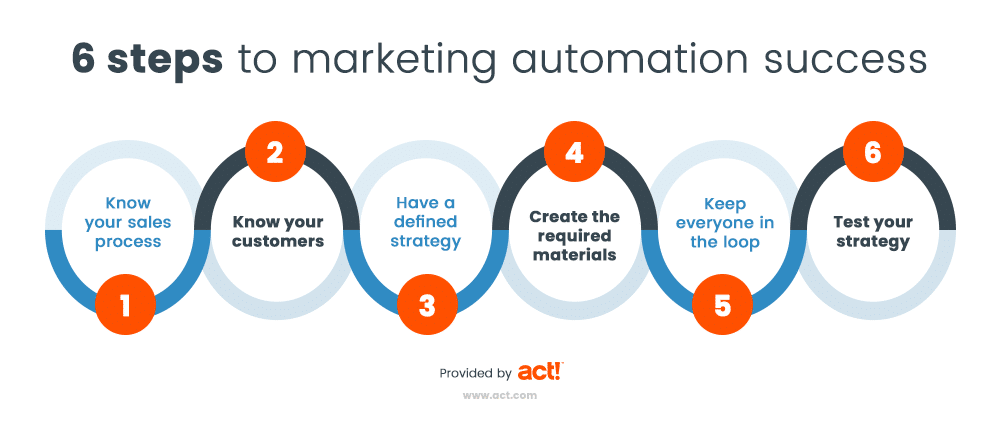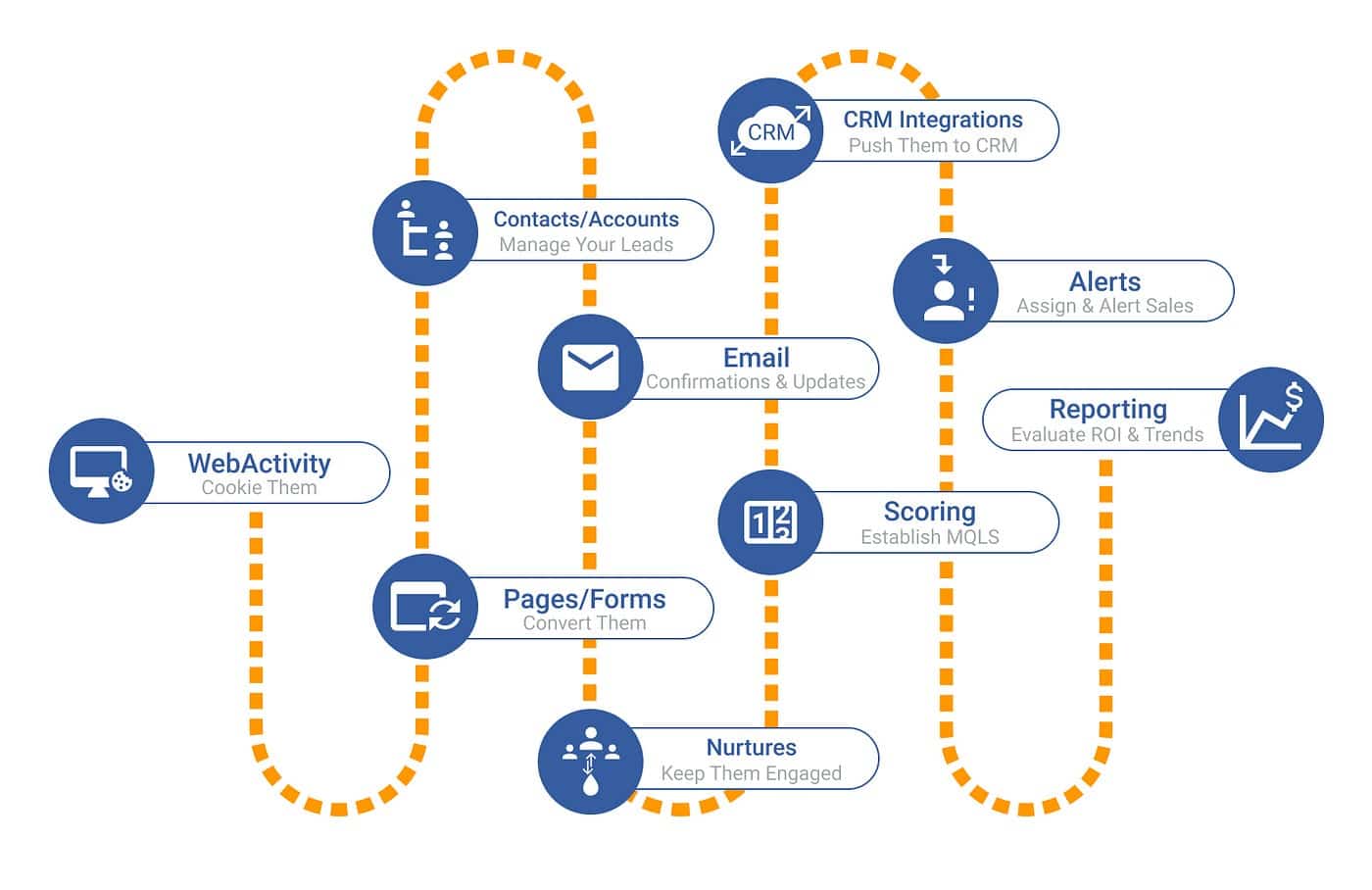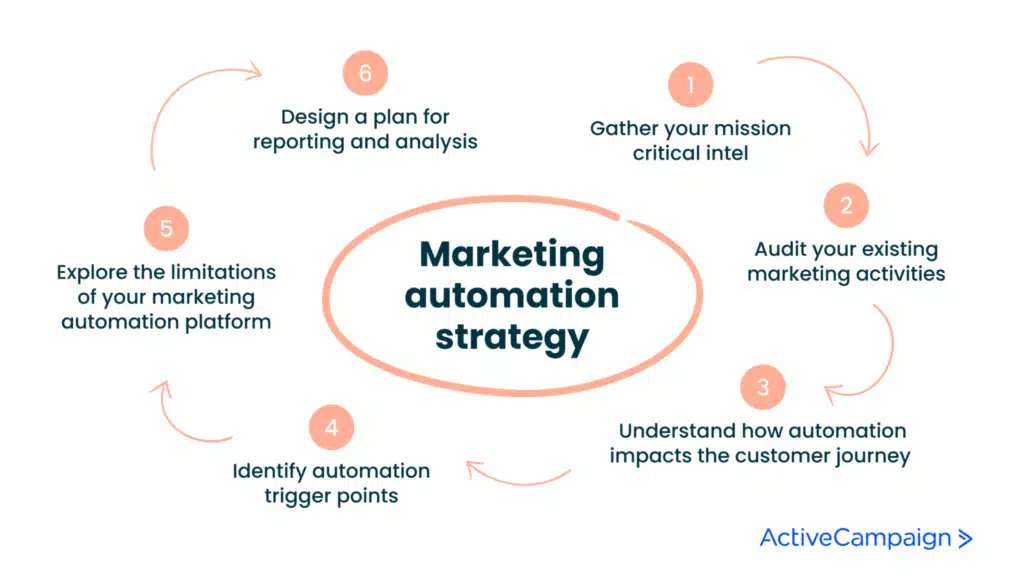Even if you are already in a Product-Led model, we’ll be discussing a framework for making that decision, some of the pros/cons of doing so, and even some unique alternative ways to look at a product-led growth model.
🕑 Reading Time: 19 MinutesHow Marketing Automation and Social Media Elevates Personalized Experiences
When it comes to personalized marketing, there are plenty of avenues you can utilize. Programs such as MailChimp and HubSpot, to name a few, provide you with marketing automation through various methods, including smart calls to actions, smart landing pages and email campaigns. Once the user gets to your website, however, it’s up to you to keep them there.
What options do you have? Well, Google offers re-targeting ads, which specifically focus on users that have come to your website and have basic information on who you are and what type of content you produce.
But one of the simplest ways to engage is through your social media.
Don’t think customers are taking a look at your social media accounts? Think again. According to Ambassador, 71% of consumers who have had good social media service experience with a brand are more likely to recommend it to others.
Social media and marketing automation is a tool your company can’t afford to skimp out on. Here’s how to use your accounts to your company’s advantage.
Where to Begin...
Customizing your target audience
Once you’re able to narrow down your target audience, social media can do the work from there. Take Facebook, for example. Marketers can upload their customer and possible prospect lists, and send relevant, effective advertising to these sections.
The perfect example: New movers. About 16% of your customers move in a year, averaging out to around 43 million people. And, considering new movers are likely to spend more in the first six months post-move than normal consumers do in three years, they’re the ideal customers.
Of course, if you aren’t getting updated contact lists, these efforts will be next to pointless. Use Facebook and other social media accounts to provide accurate, updated lists, so you can rest assured you’re targeting the right people in the right spot.
Marketing automation and social media to increase personalization for SaaS companies...
Digest your platforms
You wouldn’t want to post the same content on all of your social media accounts …. Right? You’ll need an analysis of your audience to help you decide which platform you should stick with for your campaign.
For example, if you’re aiming for a visual campaign with images for women, you’ll want to go with Pinterest. Not only do pictures do well on Pinterest, but surveys show Pinterest’s user base is made up of mostly women. According to HubSpot, Visual content is more than 40 times more likely to get shared on social media than any other type of content. So while you may not think pictures pack enough punch, this says otherwise. On the flip side, users look to Facebook for longer posts, so posting just a picture won’t be the same here. Know your platforms, experiment what works best and you’ll always deliver what your audience wants.
Note: Your first step should be finding out the demographic composition of your audience. A study conducted by comSource breaks down the age composition for each social network. Some findings include:
- Snapchat is the preferred platform for ages 18-24
- People between the ages of 25-34 preferred Instagram
- Ages 35-44 preferred Google and LinkedIn.

Bring your campaigns in
Sure, social media marketing give your campaign a brand new flavor. But if you’re looking to bring it to unheard of heights, you’ll want to mix in other forms of marketing automation, such as direct mail and email. In fact, Social Media Examiner found that over 81% of marketers strongly agree or agree that they should mix social media into their traditional marketing.
One easy way to do this is incorporate your social media into your website. You’ll find mixing these two – social media accounts and your website – will likely increase traffic to your website. It’s a win-win.
Keep track of your successes – and failures
You’ll want to keep track of your successes – and fallbacks – through engagement metrics. A lot of online platforms offer data settings where you can check out the clicks, shares, links and comments. This way, you can see how each and every campaign is doing – and where you need to tailor things.
After all, Facebook offers an “interests” section for their users’ profiles. This’ll give you great insight on where their interests lie, and send messages to anyone directly within your target market.
Understanding each online platform and altering your campaigns to deliver a personalized touch will put you steps above the competition. Not only will you be able to identify what your users want, but you’ll be able to clearly pinpoint what they don’t want.
SaaS Growth Strategy with Marketing Automation

Harness the Power of Data
Data is the fuel that drives effective personalization. By utilizing social media analytics and automation platforms, you gain invaluable insights into your audience's preferences, behaviors, and demographics. According to a recent study, 72% of marketers believe data analysis is crucial for personalized marketing success. Leverage this knowledge to understand your customers better and create targeted campaigns that resonate with their needs.
Craft Compelling Buyer Personas
To personalize your marketing automation, you must first understand who your ideal customers are. Develop detailed buyer personas, representing your target audience segments. By tapping into social media and automation platforms, you can gather vital information such as age, location, interests, and pain points. Armed with this knowledge, you can tailor your messaging and content to resonate with each persona, increasing relevance and engagement.
Dynamic Content Personalization
Personalized content is king. Utilize automation platforms to dynamically personalize your website, emails, and ad campaigns based on user behavior and preferences. A study revealed that 80% of consumers are more likely to make a purchase when brands offer personalized experiences. By dynamically displaying relevant content, product recommendations, or testimonials, you can create a customized journey that guides users toward conversion.
Social Listening for Real-Time Engagement
Social media platforms offer an incredible opportunity to connect with your audience on a personal level. Use social listening tools to monitor conversations, mentions, and sentiment related to your brand and industry. Actively engage with users, addressing their concerns, providing solutions, and showcasing your expertise. By demonstrating genuine interest and empathy, you build trust and establish long-lasting customer relationships.
Automated Lead Nurturing
Automation platforms empower you to deliver targeted, personalized messages at scale. Implement lead nurturing workflows that automatically respond to user actions, guiding them through the buyer's journey. Research shows that personalized lead nurturing emails generate an 8% click-through rate increase and a 10% conversion rate improvement. Tailor your messaging based on user preferences, previous interactions, and specific pain points, maximizing your chances of conversion.
Retention Through Personalized Customer Experiences
Acquiring new customers is important, but retaining existing ones is equally crucial for SaaS success. Utilize automation platforms to personalize the customer experience post-purchase. Offer relevant upsell recommendations, provide exclusive content, and deliver personalized onboarding experiences. Studies indicate that increasing customer retention rates by just 5% can boost profits by 25-95%. Invest in personalized customer experiences to foster loyalty and advocacy.
Before you continue reading...
You can also explore our Brand Positioning Audit Guide.
There are two things required to reach a destination - first to know where you want to go, but second to also know where you stand today. It’s true, if we asked Google maps to direct us to Pittsburgh, but it had no idea where we were then it could not show us the path we need to take.
The Power of Personalization in Marketing
Leverage Account-Based Marketing (ABM)
Large clients often have unique needs and expectations. Account-Based Marketing (ABM) is a powerful strategy that focuses on tailoring marketing efforts to individual accounts. By utilizing automation tools, you can segment your large client base and deliver highly personalized content, ads, and campaigns. Ninety-seven percent of marketers believe ABM delivers a higher ROI compared to other marketing strategies. Use automation to scale your ABM efforts and establish stronger connections with your large clients.
Personalize Onboarding and Customer Journeys
Effective onboarding and customer journeys are crucial for retaining large clients. Automated tools can help you create personalized onboarding experiences, delivering relevant resources, tutorials, and support based on individual client needs. By utilizing automation platforms, you can track user behavior, preferences, and milestones, ensuring that each client receives a tailored journey. Companies with a strong onboarding process increase customer retention rates by 82%. Automation helps you optimize this critical phase and foster long-term client satisfaction.
Utilize Data-Driven Insights
Data is the foundation of effective marketing strategies. Automated tools enable you to collect, analyze, and utilize vast amounts of data to gain valuable insights into your large client base. Leverage automation platforms to track user behavior, engagement, and conversion metrics. Use this data to refine your marketing campaigns, identify trends, and make data-driven decisions. By utilizing analytics, you can continuously optimize your marketing efforts and drive better results for your large clients.
Streamline Reporting and Analytics
When dealing with large clients, reporting and analytics become more complex. Automated tools can streamline this process by aggregating and analyzing data from various sources. Implement dashboards and reporting tools that provide real-time insights into campaign performance, customer behavior, and ROI. This enables you to generate comprehensive reports quickly, track key metrics, and demonstrate the value of your marketing efforts to large clients.
Embrace Chatbots for Personalized Support
Large clients often require prompt and personalized support. Chatbots powered by automation tools can play a pivotal role in delivering efficient customer service. Implement chatbots on your website or within your SaaS platform to address common queries, provide instant responses, and offer self-service options. By automating support processes, you can ensure that your large clients receive timely assistance, enhancing their overall experience.
Key Takeaways
In the ever-evolving realm of SaaS marketing, the secret to success lies in personalization. By crafting tailored experiences, you can establish deeper connections with your audience, boost engagement, and drive conversions.
Leveraging the power of social media and automation platforms, you can propel your SaaS business to new heights.
It's time to scale your software, technology or device business.
One quick call and we'll share our approach - no pressure.
Talk with us